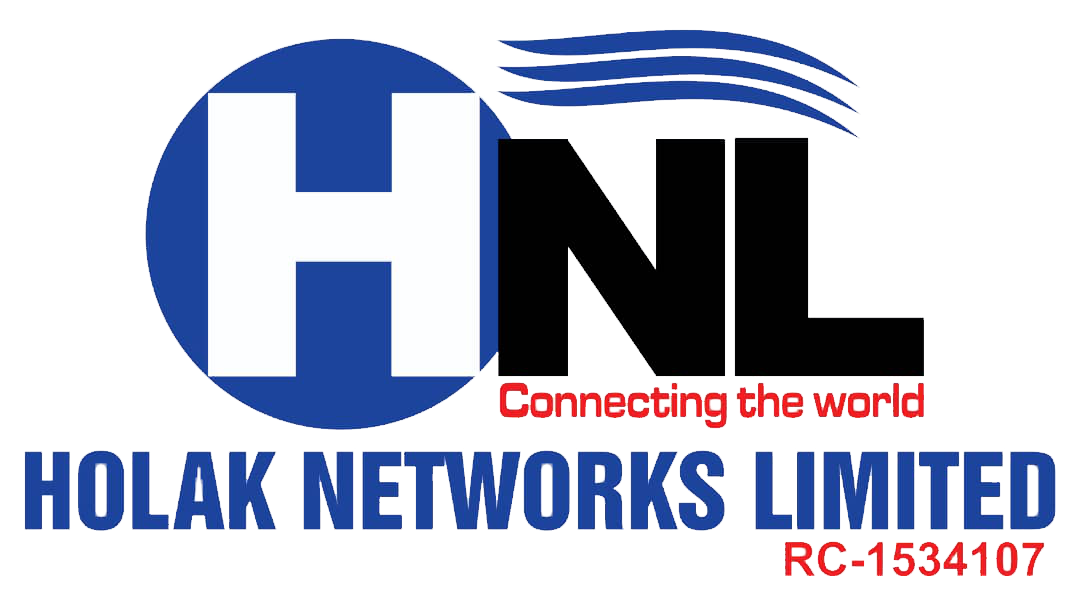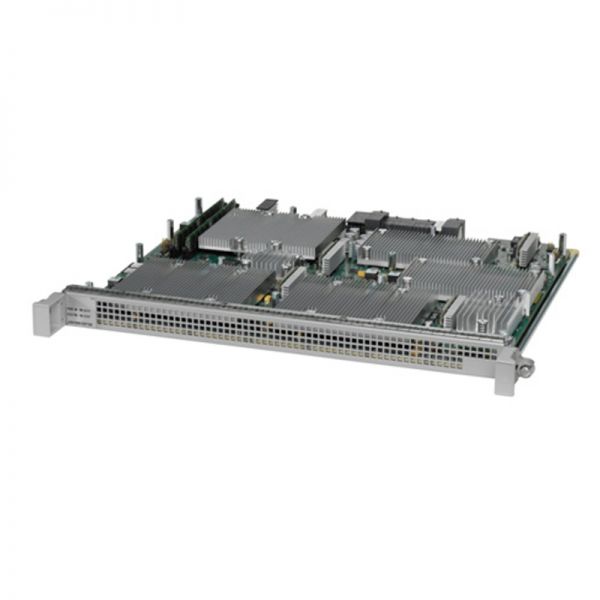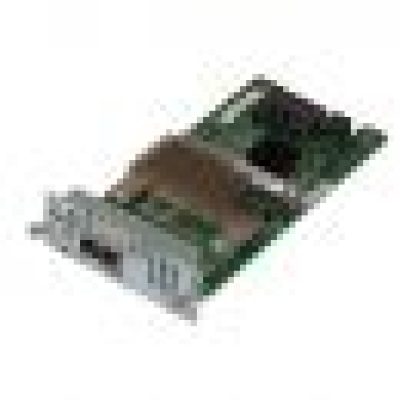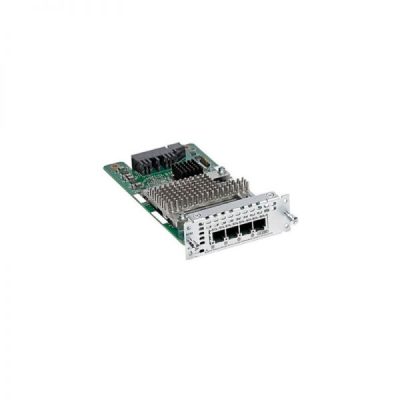ASR1000-ESP100=
Quick Specs
Figure 1 shows the appearance ofASR1000-ESP100=.
Description
ASR1000-ESP100= Overview
The Cisco ASR 1000 Series Embedded Services Processors (ESPs) handle all the network data-plane trafficprocessing tasks of Cisco ASR 1000 Series Aggregation Services Routers. These ESPs allow the activation of concurrent enhanced network services, such as cryptography, firewall, Network Address Translation (NAT), quality of service (QoS), NetFlow, and many others while maintaining line speeds.
Cisco ASR 1000 Series Routers are placed at the WAN edge of your enterprise data center or large office, as well as in service provider points of presence (POPs). The routers rely on the power of the ESPs to aggregate multiple traffic flows and network services, including encryption and traffic management, and forward them across WAN connections at line speeds. With router options that run from 2.5 to 200 Gbps, the Cisco ASR Family contains many models and licensing options to meet the speed and budget requirements of different types of organizations and various-sized locations.
The Cisco ASR 1000 ESP components of these routers accelerate service delivery using parallel processing. The ESPs are based on the Cisco Flow Processor (FP) for next-generation forwarding and queuing in silicon. They operate at 20-, 40-, 100-, and 200-Gbps data-plane forwarding throughput rates. Together, the Cisco ASR 1001-X, ASR 1001-HX, ASR 1002-HX, and ASR 1002-X Routers and 100- and 200-Gbps ESPs introduce the second generation of the Cisco FP hardware and software architecture. With FP-based ESPs at their core, ASR 1000 Routers accomplish the following:
1.Handle all baseline packet routing operations, including MAC address classification, Layer 2 and Layer 3 forwarding, QoS classification, and NetFlow packet accounting
2.Perform advanced services such as IP Security (IPsec) encryption, Network Address Translation (NAT), firewall, AppNav, Cisco Application Visibility and Control (AVC), Performance Routing (PfR), and Locator ID Separation Protocol (LISP); they offer diverse feature Layer 2 connectivity options such as Ethernet over MPLS (EoMPLS), Virtual Private LAN Services (VPLS), Overlay Transport Virtualization (OTV), and Virtual Extensible LAN Services (VXLAN)
ASR1000-ESP100= Specification
ASR1000-ESP100= Specification |
|
|
Performance |
|
| Up to 80 Mpps | Variable forwarding performance, depending on features configured |
|
Bandwidth |
|
| Up to 100 Gbps | For the combination of commonly used features + Firewall or NAT
Shared by all Cisco ASR 1000 SIP (ASR1000-SIP10 or ASR1000-SIP40) cards |
| Up to 29 Gbps | For plain IPsec encryption (1400-byte packets) |
|
Scaling |
|
| Access control | Up to 4,000 unique ACLs and 400,000 ACEs per system |
| Broadband | Up to 58,000 sessions and 16,000 L2TP tunnels |
| IP | Up to:
● 4,000,000 IPv4 or 4,000,000 IPv6 routes Multicast: 100,000 routes and 44,000 groups |
| QoS | Flexible number of queues per system:
● Up to 232,000 queues ● Three levels of hierarchy ● Two LLQ queues per policy, with up to 4,000 policies 8-kbps policing and queuing granularity <100-microsecond latency for high-priority applications |
| Real-time traffic | Up to 4,000 CRTP sessions |
| Security | Up to:
● IPsec: 8,000 tunnels ● Firewall: 6,000,000 sessions and 220,000 sessions-per-sec setup rate ● NAT: 4,000,000 sessions and 300,000 sessions-per-sec setup rate ● Carrier-Grade NAT: 12,000,000 sessions |
| L3VPN | Up to 8,000 VRF instances |
| GRE | Up to 4,000 tunnels |
| Cisco Unified Border Element (SP Edition) | Up to 64,000 sessions (each session represents a complete voice call with 14 SIP messages per call; that is, two call legs on the SBC consisting of two media legs for a bidirectional media flow and seven SIP messages per call leg) |








Reviews
There are no reviews yet.